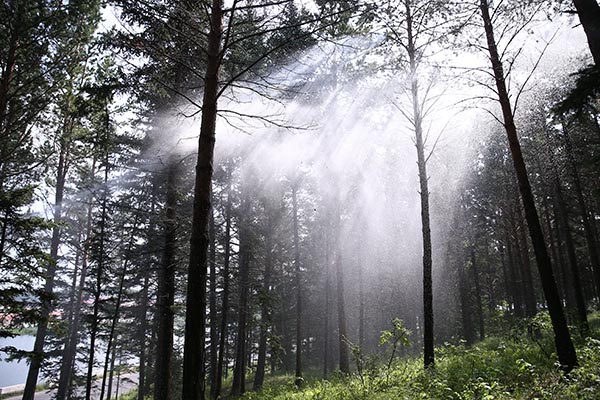 |
|
The conifer trees stand vigilant at Saihanba. [Photo by Zou Hong/China Daily]
|
A photographer accompanying me who was here two hours before me tells of the magnificent sunrise: the sky-and the lakes that reflect it-was flushed by a blend of crimson, fuchsia and ochre as the dark blue receded to usher in a new day.
Everything here is sculpted by sunlight, from a blade of grass to the mountains and trees in the far distance. By 7 am the mist has largely dissipated, and the warm sun pours a bucket of golden dye into the water, and onto the anglers who sit at the lakeside. Saihanba has arisen.
Although the forest is officially located in Hebei, its northern edge borders China's Inner Mongolia autonomous region, which gives the place a strong Mongolian flavor. For one thing, in Mongolian Saihanba means "beautiful highland".
In history, the place has consistently lived up to that designation, first becoming a royal hunting ground in the early 10th century. That was when the Liao Empire, set up by a nomadic people, ruled vast tracts of land in northern China. Saihanba, with its lush forests and boundless grassland, was where successive Liao emperors continued their tradition of spring and autumn hunting, chasing wild geese with their specially trained birds of prey.


























 Raymond Zhou:
Raymond Zhou: Pauline D Loh:
Pauline D Loh: Hot Pot
Hot Pot Eco China
Eco China China Dream
China Dream China Face
China Face






